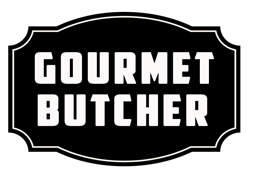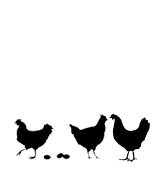 |
 |
 |
 |
 |
 |
WHERE YOUR HEALTH IS IMPORTANT
GRASS-FED VERSUS GRAIN- FED. WHATS THE DIFFERENCE?
Most South Africans are unaware that there is any difference between grass-fed cattle and grain-fed cattle. For those who do know something about it there is some contention, and depending who the person is, they will give you the pros and cons for both types of feeding. Similar to scientists are paid by tobacco companies who will tell you that there is no proof smoking causes lung cancer.
Let us consider the cow and the chicken. The chicken was designed to eat grain as its staple diet. But in its throat it produces an acid, which combines with the grain. If you have cooked chicken giblets or cut up a chicken you will know the stomach of a chicken is extremely tough, but it is like that so as to digest the grain.
On the other hand a cow was designed to eat grass. It has no way of digesting grain, so what happens the cow gets sick, its lungs begin to collapse, and to keep it alive, the farmer injects it with antibiotics.
Something else to consider most commercial grain in South Africa is Genetically Modified (GMO). What is this grain doing to the animals and to us who are eating the meat?
Omega-3 Fatty Acids Fats get a bad reputation, but the truth is there are good fats and bad fats. And omega-3s are really good fats.
CLA CLA may not be a household term, but here at
Gourmet Butcher we've become rather obsessed with it. That's because recent studies have shown that conjugated
linoleic acid, CLA for short, can have a powerful effect on our health.
IT'S BEEF AND ITS GOOD FOR ME?
Forget everything you think you know about beef. That it's high in saturated fat, that the best cuts are marbleized with fat. That it increases your risk for certain diseases. It turns out that a lot of these issues are
triggered by an unnatural pH in a cow's first stomach. The fermentation chamber that initiates what will ultimately
be the critical balance of fatty acids, amino acids, vitamins and enzymes that are essential for human nutrition,
the first stomach must be healthy in order for an animal to produce healthy meat.
THE TRUTH ABOUT SUPERMARKET MEAT
For almost all of human history, there was only one way to raise animals: off the surrounding land. Cattle spent their lives years grazing on the indigenous goodness of local grasses to grow into strong, fully developed adults. Other grazing animals like goats, and sheep lived the same way—known as ruminants, (A ruminant is a mammal that digests plant-based food by initially softening it within the animal's first compartment of the stomach, principally through bacterial actions, then regurgitating the semi-digested mass, now known as cud, and chewing it again. The process of rechewing the cud to further break down plant matter and stimulate digestion is called "ruminating".) These animals are designed to eat the grasses, plants and shrubs that grow naturally. Farmers knew this and nurtured soil, water and plants for pastures that were alive with the high-quality grasses and for healthy animal growth. The animals roamed the veld enjoying their freedom, and the nutritious food that was available through grasses and shrubs.
Today the reality is far different.
Sixteen to twenty ago, things changed in South Africa, big business took over, informing farmers that to remain profitable they had to change their way of farming, and begin farming using feed-lots, and instead of the animals enjoying the veld, they were fed on grain. Vast surpluses of corn, wheat and soybean meal—produced in mass quantities thanks to petroleum-based fertilizers helped expand of the cattle-feeding industry. Now animals, many of which have never seen a blade of grass after weaning, are fattened on unnatural diets, with added hormones and antibiotics and churned out for slaughter in little more than a year. This efficient industrial process guarantees that there will always be plenty of meat at your local supermarket—and that it will consistently be inexpensive.
But we are paying in other ways. And one need only look to the beef-loving country Argentina to understand how. Though Argentina leads the world in per-capita red meat consumption, the country enjoys lower numbers in deaths-per-1000 of heart disease, diabetes and cancer. And, yes, Argentina has specialized in grass-fed beef production for centuries.
DRY AGING – WHY DOES THE MEAT TASTE BETTER?
Dry aging is the process where an entire animal carcass or primal cut (whole rib or loin), without any type of covering on it, placed in a refrigerated room at a specific temperature, humidity, and air velocity for 7-21 days.
During this process a crust forms on the outside of the meat, similar in texture to biltong. This layer is trimmed away after aging, leaving steaks that are superior in tenderness and flavor. During the dry aging process, the juices are reabsorbed into the meat, enhancing the flavor and tenderizing the steaks.
If you freeze your vacuum packed meat, when you remove it from the freezer to defrost, make a hole in the plastic, this will ensure the blood and any liquid trapped in the bag, escapes. If you don't do this the meat sits in the blood and can make your piece of meat mushy.
Forty years ago, most of our beef was dry aged. Yet in the early 1960’s the process of vacuum packing beef right after slaughter became the norm. The advantage of this process was that processors could “wet age” the beef in the bag and not lose any of the weight of the beef due to evaporation and trim.
During wet aging, the meat sits in its own juices causing the beef to have a wet, metallic taste. But wet aging was much more cost-effective for processors. As they changed over, consumers tastes followed slowly, the consumer forgot what the real taste of steak was. Currently the majority of meat you purchase is either wet aged, or dry aged for only 5 days.
WHAT DOES “NATURAL” MEAN
Natural is a tough term to reliably and consistently define these days.
“All Natural” on a label simply means “Minimally Processed.” This says nothing about the use of hormones, animal based feeds or antibiotics. “Naturally Raised” is thus becoming prevalent in the industry to cover that gap, but there is no fixed definition for this term either. Every producer and processor can define “natural” as they please..
For example, sometimes naturally raised means no antibiotics ever, and sometimes it means no prophylactic antibiotics administered, and sometimes it says nothing about antibiotics at all.
Because of all of this ambiguity, we think it’s worth the effort it takes to buy your meat from a traceable trusted source whether that source is – Kalahari Meats or the farmer himself.
COOKING GRASS FED BEEF AND OTHER LEAN MEATS
You just bought a beautiful piece of locally raised, grass-fed beef from us , and you want to impress your guests!
Here are some cooking tips.
Because this beef is grass-fed, it is leaner than the grain fed beef you may be used to cooking with. Lean beef cooks more quickly, and overdone lean beef can get dry and tough. For a delicious, juicy steak or burger, it’s best to aim for cooking rare to medium-rare.
To properly cook a rib-eye or sirloin steak, approximately 3cms or two fingers thick, take the meat out of the fridge about 60 minutes before cooking.
If you are cooking it in the kitchen, salt and pepper the meat. It is better to use crushed black pepper and coarse salt. Place the steak into preferably a cast iron frying pan or skillet that has been pre-heated over high heat. Then drizzle olive oil into pan and don't let the oil get too hot before adding the steak.
Cook over a high heat for 3-4 minutes on each side and remove from the heat. Let it rest, (See Resting below) and enjoy.
If you are braaing your steak, season with a rub or marinade and then only add coarse salt to the meat just before cooking. Many South Africans either add salt long before they begin braaing, this will allow the salt to soak into the meat. Others only add salt when the meat is nearly cooked. This defeats the object as the meat hasn't had time to infuse any salt.
RESTING.
Letting your beef rest after cooking is as important as the cooking itself. This goes for all meats and all cuts.
Once you pull the meat out of the pan or oven or off of the grill, put it on a cutting board and let it rest, to keep it warm cover with foil. 8-10 minutes, longer for larger pieces of meat. Please note if you cook a minute steak or cook for short time, then the calculation is let it rest for as long as you cooked it.
SLICING
When it’s time to slice, it’s best to cut the beef across the grain and at an angle of about 45 degrees (rather than straight down, perpendicular to the cutting surface). By doing this, you will cut through as many muscle fibers as possible with each slice. In general, this will be across the short section of rectangular piece of meat (though this is not a hard and fast rule).
|
Shipping Olive Oil Morgenster Flos Olei Q&A About Us Contact Us Meat Facts Website Disclaimer Terms and Conditions Copyright Notice Privacy Policy Site Map



